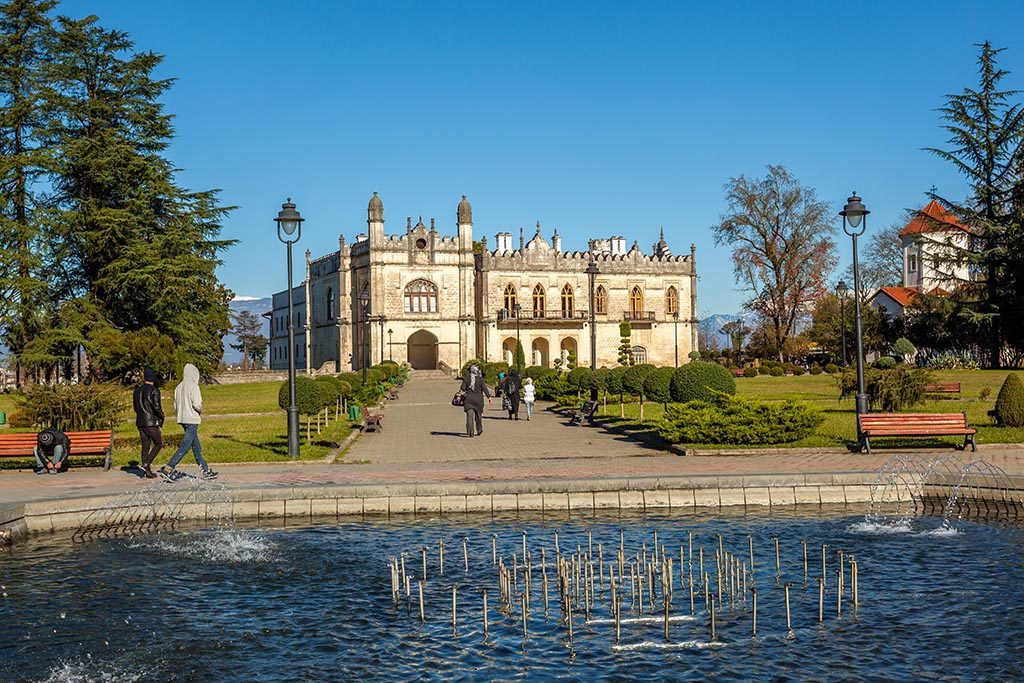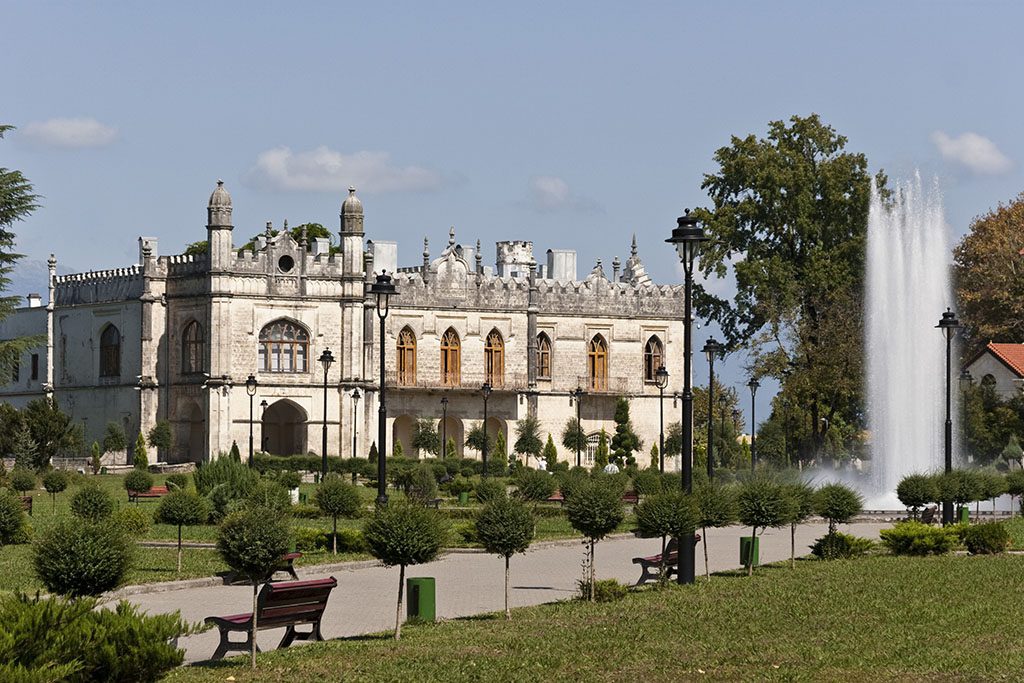Georgia amazes with its diversity not only in terms of nature and attractions. This amazing country is home to distinctive peoples who preserve ancient traditions and are happy to share their “riches” with tourists. Are you ready to get acquainted with an ethnic group that has its own language, culture, customs and tough character? Hospitable Zugdidi invites you! This is the land of Samegrelo, steeped in legends about the brave and powerful princes of Dadiani, victorious wars in which the Megrels always defeated their enemies, and stories about the life of a small but rebellious people.
History of Zugdidi
“Big Hill” (literal translation) – is located in the western part of Georgia, the distance to the Black Sea is about 30 km. Previously, the city was called Dadi. This is a relatively “young” city, which was founded in 1918, it is inhabited by about 43 thousand residents, of which almost 85% are Megrelians. Zugdidi is located in the Colchis Lowland, near the valley of the full-flowing Rioni River. Today, the settlement is the heart of the ancient region of Samegrelo Zemo Svaneti, which is rich in its historical heritage.
The history of the city, or rather the settlement in this area, dates back to the 16th century, small churches from this period have survived. The end of the 17th century was marked by the construction of first a defensive fortress. And then the palace of the great Megrelian princes Dadiani. Today we see a luxurious castle and a beautiful botanical garden. They acquired their final appearance at the end of the 19th century.
In 1855, Zugdidi was conquered by Turkish troops led by Omer Pasha. But the Megrelian uprising in 1857 allowed local residents to drive the conquerors out of the city.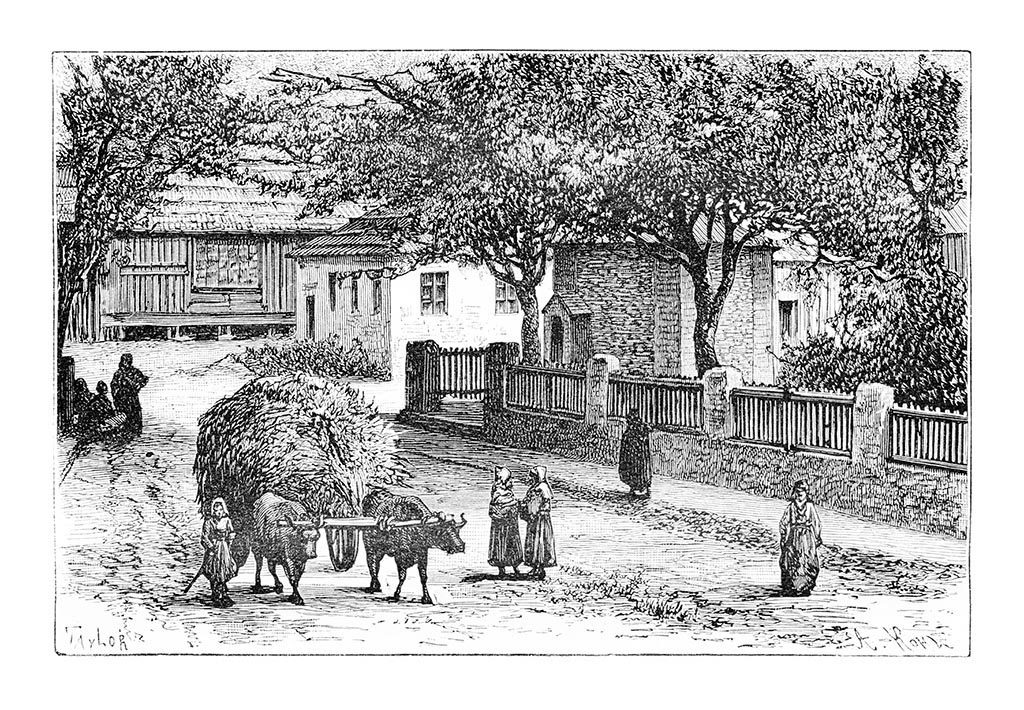
Streets of Zugdidi. Le Tour du Monde, Travel Journal, 1881In 1993, it was in Zugdidi that the headquarters of the so-called Government in Exile, headed by Z. Gamsakhurdia, was located.
Sights of Zugdidi – Palace of Princes Dadiani
The main pride of the city, the magnificent “treasury” of the kings, an amazing journey into ancient times – this palace is considered one of the most beautiful in all of Georgia. Its architecture is fascinating, the grandiose structure can be confused with the most popular European castles, while the Dadiani Palace is ready to give them a head start!
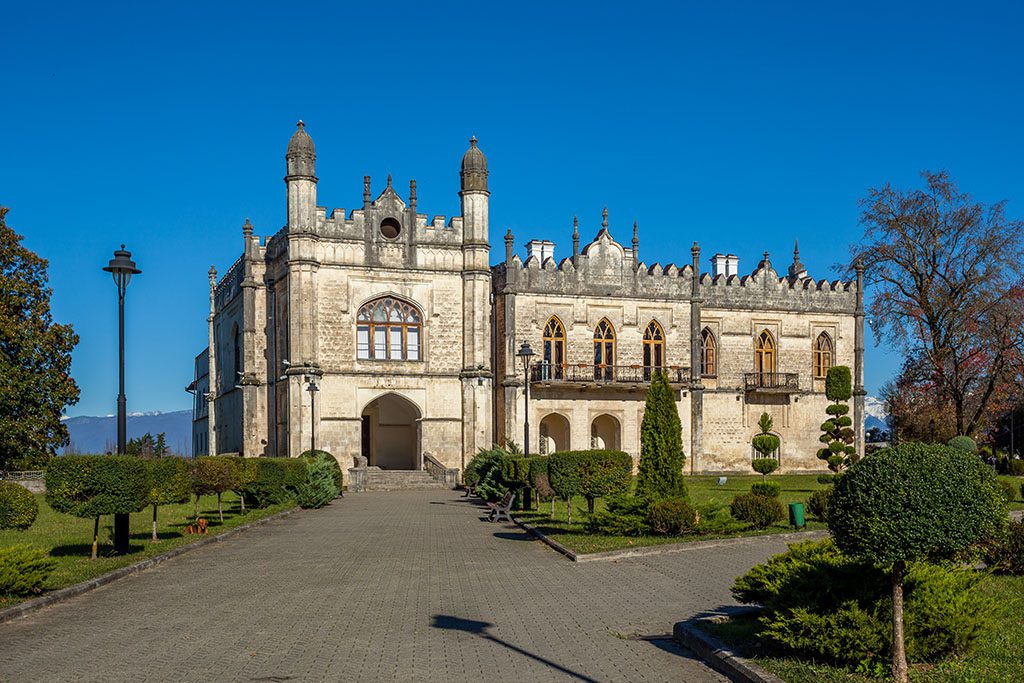
The original and luxurious building surprisingly combines both the heritage of Georgian culture and the Russian Empire.
Picturesque facade, refined “battlements” of towers, semicircular vaults of windows, arches and columns. The majestic palace complex gives tourists a unique opportunity to immerse themselves in the life of the Megrelian princes.
The interior of the castle is very rich. Here are the amazing wooden vaults, which were created by skilled architects, and the grand royal halls, chambers, designed in a pretentious eclectic style. You can admire the amazing paintings on the walls, see a collection of expensive utensils, dishes, furniture in a variety of styles. A walk through the palace is a fascinating excursion into history. The canvases of the paintings depict battle scenes, persons of the Dadiani family, many famous rulers of that time.
As you walk towards the castle, you will see a very beautiful fountain in the garden, benches where you can bask in the sun, and paved paths.
The castle is located at the address: Z. Gamsakhurdia Street, 2, tel.: +995 (215) 5-06-42.
Dadiani Palace Museum
This museum can rightfully be called one of the richest and at the same time unusual. All exhibits are presented right in the halls of the castle. That is, you do not visit a boring “building” where everything is under glass, you immerse yourself in the history of the princely family and Georgia!
The museum was founded in 1849 by the ruler of Megrelia David Dadiani. The prince collected personal collections, returned ancient icons to their historical homeland, was fond of weapons, “ordered” furniture from all over Europe. He also showed the world ancient treasures that had been hidden from prying eyes for centuries – these are artifacts from the excavations of the Tagilon treasure, a mask made of gold from ancient times, many jewelry from Constantinople.
Today the museum can surprise its visitors with more than 41,000 exhibits that have no analogues in the world.
The museum’s archaeological hall is also impressive. It contains unique artifacts found during excavations of the ancient city of Archeopolis. There are exhibits preserved from the Paleolithic era. The grandiose numismatic collection deserves special attention – coins of ancient Rome, Colchis, Georgia, Byzantium. The vast majority of coins were minted from precious metals – silver and gold.
Another hall is dedicated to unique Christian relics. It contains ancient icons in expensive frames, amazing canvases by unknown authors dating back to the 11th-12th centuries. Well, the main “pearl” of the collection is the shroud of the Holy Mother of God. It is kept in the museum, but is put on display on major Christian holidays.
This mysterious relic is surrounded by legends, because it is not known for sure how it got into the Dadiani collection. If you are lucky enough to touch this amazing artifact, you will be able to ask the Virgin Mary for healing from any illness. Local residents believe that the Virgin Mary helps everyone who turns to her with pure thoughts.
Another exhibit worthy of attention is the death mask of Napoleon Bonaparte. There are 3 artifacts in the world and one of them is kept in Zugdidi – it was given to Dadiani by the descendants of Murat, who was the husband of one of the princesses of this ancient family.
The museum is located directly in the castle. It is open every day (except Monday) from 10.00 to 18.00. The price of a “pass” is 15 lari ($ 3), the guide’s services will cost the same 15 lari.
Botanical Garden (Dadiani Garden)
Before you get to the unique palace, a real “work” of art created by nature and man will appear on your way. Almost 27 hectares of land are planted with hundreds of rare trees, amazing flowers, endangered ferns, luxurious shrubs.
Here you can see plants that are considered endangered. This delightful garden was “born” thanks to E. Chavchavadze-Dadiani. The princess dreamed of creating an amazing oasis and she succeeded. In 1840, rare seeds and seedlings were purchased from the best galleries in Europe, and the famous German gardener J. Babini began to create a garden. Thanks to him, you will be able to see trees that are up to 200 years old, they were brought from India, America, Japan and Europe. The master created a wonderful garden, where magnificent ponds were hidden under the canopy of dense vegetation, exotic flowers were fragrant almost all year round.
Today, the princess’s “idea” amazes not only Georgians, but also tourists from all over the world. This living “treasure” continues to amaze tourists with its aromas, excellent olive tree (it is over 200 years old) and numerous flowers. Address: Z. Gamsakhurdia St., 2.
Palace Church
The temple building is located in the courtyard of the castle – if you are moving from the botanical garden to the castle, it will be on your way. The small church is buried in the greenery of trees, it was built in the 6th century in a strict Georgian style.
Despite its modest size, the temple creates an amazing impression – it seems to “rest” on the sky. This effect is achieved due to the combination of strict geometric forms of the building. The external and internal decoration of the temple is modest, almost authentic, which is typical for Georgian temple buildings of this period. Visiting is free.
Church of Our Lady of Blachernae
When you come to Zugdidi, be sure to visit this unique temple building. It was built approximately in 1825-1827 by order of Prince Levan 4 (from the Dadiani family), and the funds for it were allocated by Tsar Alexander 1 himself, who always favored the ancient Dadiani family.
This church is of particular interest to pilgrims, because unique Christian relics are kept here. A particle of the relics of St. George the Victorious, a fragment of the sponge that was applied to the lips of Christ during the crucifixion and a part of the sacred belt of the Virgin Mary.
These sacred attributes were brought from Byzantium to preserve them for posterity and protect them from destruction by the Turks in the 15th century.
If you come to Zugdidi in July, you are lucky, on the 15th there is a big religious holiday Vlakernoba in honor of the Virgin Mary. Many people gather near the temple, religious processions take place, bells ring. The church is located literally 300 m from the Dadiani Palace, from the back side. If you come to the city by bus, just cross the road in the city center (there is a bus stop) and you are at the temple. Visiting is free.
The environs of Zugdidi
Rukh Fortress
Not far from the city, a monument to the former glory of the Megrelian rulers has been preserved. These are the ancient ruins of a once grandiose impregnable fortress of the 17th century. Scientists hypothesize that the structure is an integral part of the Kelasur wall. Its length was up to 160 km and united the Inguri and Kelasur rivers. This defensive fortification became “landmark” for the Georgian people – it allowed them to protect their lands from the attacks of the Abkhaz feudal lords in 1780.
Near this wall, a grand bloody battle took place with the participation of Katsia 2 (the Megrelian leader) and his ally, the Imeretian ruler Solomon 1. Together, they gave a worthy rebuff to the Abkhazians, keeping the Georgian lands in their possession for many years.
How to get there – from Zugdidi, take the E97 road (by car), drive to the settlement of Rukhi. You can also get there by minibus from the Zugdidi bus station (near the railway station). Visiting is free.
Tsaishi Cathedral
This temple is dedicated to the Dormition of the Blessed Virgin Mary, and for many centuries was considered the center of education in all of Georgia. It was built in the 14th century, but before that there was already a temple building here, albeit in the form of a modest basilica (presumably wooden, dating back to the 10th century).
The monumental church is attractive with its strict architectural forms, authentic construction solutions of that time. Today you can visit the temple for free, admire the large columns, frescoes and expensive iconostasis, high balconies.
Near the church there is a small functioning bell tower, and the ancient fence has been preserved. When you get here, a person instantly abstracts himself from the surrounding world – an unusual silence reigns here, the colors become brighter, and an amazing subtropical garden invites you to sit and think about the eternal under the shade of spreading palms.
Tsaishi Cathedral is a place where tourists love to come to enjoy the pristine beauty of nature and the ancient temple.
How to get there – it is preferable to take a taxi. The trip will cost about 55 lari ($ 20), travel time is 15-20 minutes. There is no direct minibus, but you can ask to stop on the highway near the village of Tsatskvi. Then walk through the village to the bridge. Before it there will be a turn to the right. Walk 350 meters and again you will see a small bridge, after which a gravel road begins. You need to walk along it for about 700 m and go down, taking a little to the right. We overcome 2 more bridges and walk 300 m to the temple. The walk will take about 1 hour.
Cathedral in Tsalenjikha
This is an ancient cathedral (12th century) of Christ the Savior, which tourists know so little about. But it is definitely worth visiting – amazing frescoes, an expensive iconostasis and stunningly beautiful landscapes.
The church was built on a high hill, not far from the Tskhenistskali River. A castle was later added to the majestic domed cross-shaped structure, today only its ruins remain. Near the church, an underground passage was built, almost 50 m long, it was intended for the rapid retreat of residents from the village during enemy attacks.
The cathedral with huge vaults and unique paintings by both Byzantine and Georgian artists has been perfectly preserved to this day. Inscriptions in ancient Greek and Georgian are visible on the columns.
There is a bell tower nearby, the area around is surrounded by a fence. The ruins of the castle are only the first floor of the building, the cladding has not survived. But this place still attracts tourists – it was in this castle that representatives of the Dadiani family lived from the 12th to the 17th centuries, after which they settled in Zugdidi.
But in addition to contemplating the temple, you will have an excellent opportunity to admire the Caucasus Range, in good weather the view is stunning. A picturesque view also opens up to the villages located below – a sea of greenery and an azure expanse of sky.
How to get there – buses run from the city to the village of Tsalenjikhe. The distance to the village is about 27 km, travel time is 30 minutes.
Tobavarchkhili (Silver Lake)
Just 20 km from the city there is a small village Ganarjiis-Mukhuri, from which you can climb to a stunning lake. It is perhaps one of the most breathtakingly beautiful in Georgia. At an altitude of 2650 m is the Silver Lake, formed due to volcanic activity. Here you will find another surprise – a stunning mountain waterfall with crystal clear water!
If you like trekking – be sure to visit this unique place. Unforgettable emotions await you – ferns taller than a man, alpine meadows with amazing flowers, many other small lakes and small rivers falling with a roar into the stone “bowl” of the mountains! We recommend going on a hike with an experienced guide, the places are difficult to pass.
Walking tour of Zugdidi
The city is not very large in area, its length is about 7 km.
The “heart” of the settlement consists of two squares, they are separated by the Zugdidi Boulevard, 511 m long. Walking along it, you will find yourself in the shade of spreading trees, here are located almost all the cafes of the city, where you can have a tasty snack.
On the Boulevard (approximately 300 m from its beginning) is the hotel “Odishi”, a little further the post office and the cinema “Atrium”. The Boulevard is crowned by the city hall – it is located almost on the corner of Rustaveli Street.
The southern end of the boulevard is Freedom Square, where the Samegrelo administration and several banks are located. The northern end of the main street is the Central Square, from which Teatralnaya Street starts. After walking along it for about 200-350 m, you will see the Sh. Dadiani Drama Theater, to the north of it there is a stadium. Going around the stadium from the north – you will come out onto an alley that will lead you straight to the Dadiani Palace.
Another street named after Z. Gamsakhurdia runs parallel to the boulevard. Across the main artery (slightly north of the city center) runs Sh. Rustaveli Street. Moving along it to the west, you will reach the local market, where you can buy both delicious food and numerous souvenirs.
After going around the market and walking another 600m, you will reach the Zugdidi railway station. From Rustaveli Street, you can clearly see the legendary Svan tower, which reminds you that Svaneti is already very close. By the way, all the minibuses to Svaneti are located near the tower.
Infrastructure for tourists
Zugdidi most often becomes a transit city before visiting the unique Svaneti. Therefore, there are few hotels here. But there is an excellent and inexpensive “Zugdidi Hostel”. This is a unique place where you have the opportunity to communicate with Mingrelians who are ready to talk for hours about the culture of the people, share thoughts on politics, and even about mortal life. Address: ul. Sh. Rustaveli, 8 – you need to walk a kilometer from Gamsakhurdia Avenue along Rustaveli.
Planning a delicious lunch or dinner – the best place in Zugdidi is the restaurant “Diaroni”. This place immediately captivates guests with its very generous menu. Here you can order any kind of meat, delicious traditional desserts and, of course, all kinds of wines. Be sure to try the local satsivi, it will cost only 30 lari ($ 13), but the portion is huge, enough for 2-3 people. Address: st. Gamsakhurdia, 80 m from the Central Square.
How to get to Zugdidi?
The main station is located near the railway station. Another “Central” station is to the east of the Botanical Garden, across the road from it. Buses depart from here:
Tbilisi – a ticket costs 27 lari ($10). Departs every 1.5 hours.
Batumi – from 15 lari ($6), departs every hour.
Poti – from 10 lari ($2.7), departs at 10.00.
If you are planning a trip from Tbilisi, in addition to the minibus, you can also get to Zugdidi by train. The Tbilisi – Zugdidi train (high-speed, comfortable) departs from the capital at 8.20 and arrives in the city at 15.08. A second-class ticket costs 17 lari ($6.2), first – 29 lari ($10.5).
When is the best time to come to Zugdidi?
This region is famous for its subtropical, very warm climate with high humidity. The city itself is located at an altitude of 110 m above sea level. If you like to bask in the rays of the gentle sun, you need to come in July-August. The temperature is set at about +28 +30C. The coolest months are January and February, the temperature will be about -1-3C, there is a lot of snow in winter. The rainiest time is the beginning of June, mid-September and sometimes October. But how long to stay here is up to you! Although the city is small, it has “rich” surroundings and you can enjoy the beauty of this amazing region for several days.
Samegrelo Zemo Svaneti is an unusual region in Georgia. It always amazes tourists with its originality, natural beauty and, of course, local color. It seems that ancient traditions have not disappeared anywhere – they set the pace of life, create their own laws, which the ancient Georgian people follow!
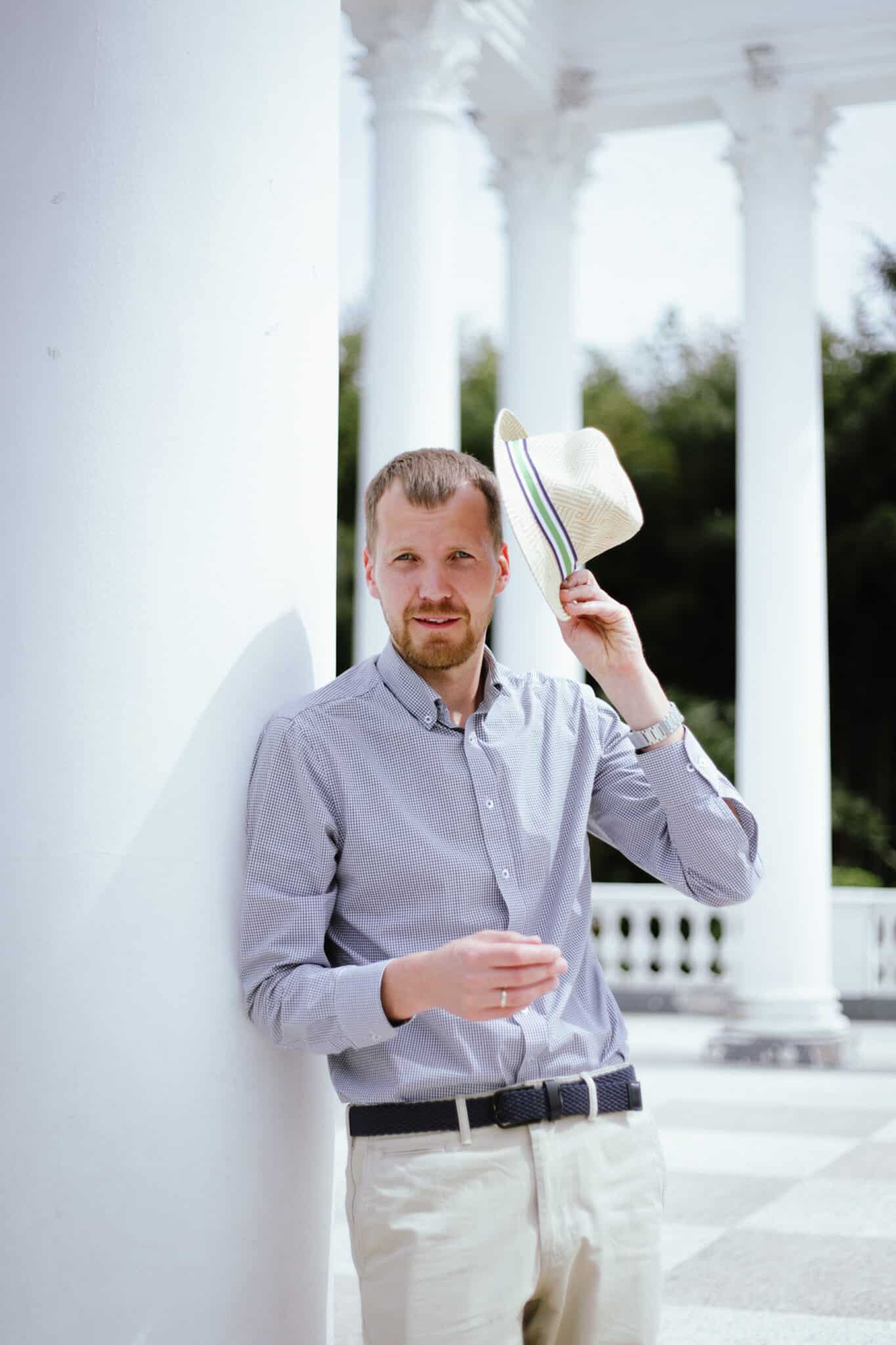
My name is Vitaly Kibitlevsky, I am a tour guide and creator of unique quests in Batumi. If you want to walk around the city with a fascinating storyteller or plunge into an exciting adventure, write to the mail: vitkibit@gmail.com
Find out more about me and my projects here


